Despite the headline, I think we can all agree that there is rarely one thing that causes someone to be a picky eater. (Just as there is rarely one thing that causes autoimmune disease or mental illness or financial insolvency). The full story is often more complex and nuanced. Research fails to put a finger on it.
That said, I’ve been thinking lately about the ways we infantilize our kids around the table (beginning in infancy!).
Some of it is necessary—I would have many a shattered plate by now if I didn’t source alternative materials for my munch when she first started solids. But some trends I think we owe to the Baby Industrial Complex, which encourages us to buy a new solution for everything rather than use what we have.
Which brings me to the subject of quadrant plates.
When we hit the 6-month mark, I realized that I hadn’t thought this far ahead on my baby registry. So like any normal person, at around 10pm, I sat in bed and panic bought a random assortment of plates, utensils and sippy cups from Amazon to be delivered to my doorstep the next day.
Besides avoiding plastic and sticking with food grade silicone or stainless steel, I didn’t consider the implications of these purchases.
But about a year in, I started to notice some rigidity creeping into my daughter’s mindset around foods touching other foods. I chalked it up to the natural ebb and flow of her development—a new need for autonomy and control rearing its ugly head.
It was only once I tuned into these behaviors at restaurants, where there’s nary a divided plate in sight, that I began to wonder how the daily “segmenting” was impacting her.
I’ve talked before about the difference between picky eating and rigidity. I think we often misrepresent rigidity as pickiness. Picky eaters might only eat five foods. Kids who have developed some rigidity might eat fifteen foods, but only certain ways.
I think it’s an important distinction because there’s more that you can do about rigidity than pickiness. You can’t force someone to like something, but you can take steps to disrupt ingrained habits. You can take kids outside their comfort zones at home so that they can be more flexible out in the world. (Here are some ways other moms do this).
For the record, so much of my approach with Munch Menus (and the “same same, but different” variations for each recipe) is about trying to raise a less rigid eater.
And one easy way you can normalize food touching other food is to simply opt for plates that are not segmented. I made the switch last year and do my best to ensure even when I’m serving a blue plate special that all the components are touching and slightly mixed together.
It can be a little harder to find suction plates that are NOT divided, but I’ve rounded up a few of the ones that I’ve tried (depending on your material of choice).
Now that I have a 2.5 year old, we are basically at the stage where she can use our everyday plates and utensils. It’s a thrilling hump to get over. But it might have been a bigger hump altogether if we’d gone straight from quadrant plates to the everyday business of adult eating.
So much attention is paid to the importance of family dinners and the halo effect it has on good eating habits and mental health. (If you’re curious, Melinda Wenner Moyer just wrote a piece about how the research isn’t as compelling as you think).
For those of us who can’t swing eating one meal as a family every night (my Munch Menu villain origin story), I think one small step is to ask ourselves how the way we feed our kids might differ from the ways we feed ourselves.
It’s a gap I’m still exploring how to close. But giving away my quadrant plates was an easy place to start.
I’m going to be sharing another small strategy I’ve been using to normalize “food touching other food” in next week’s Friday Munch Menu, so make sure you subscribe. I’d also love to hear more about your approach in the comments.
Happy munching!
Phoebe
NON-DIVIDED KID PLATES I LOVE
I want to caveat these recs with the fact that I am not deep in the lead-free mama corner of the internet. While I want the materials my kid is in contact with every day to be as non-toxic as possible, it is too exhausting (and stressful) to painstakingly research every little thing. It is not my approach to parenting.
A lot of our food, despite best efforts, comes in plastic. It is the nature of the grocery store these days. A lot of her toys are plastic. I pick and choose my battles in the plate department by opting for stainless steel, porcelain and food grade silicone (because it is more convenient than the other two!).
Classic Silicone Suction Plate: During the early eating stages, when my kid was prone to dumping the contents of her plate on the table or floor, I opted for silicone plates that had an impressive suction. Mushie is one of my go-to brands because it’s made in Denmark and they tend to have stricter standards with materials.
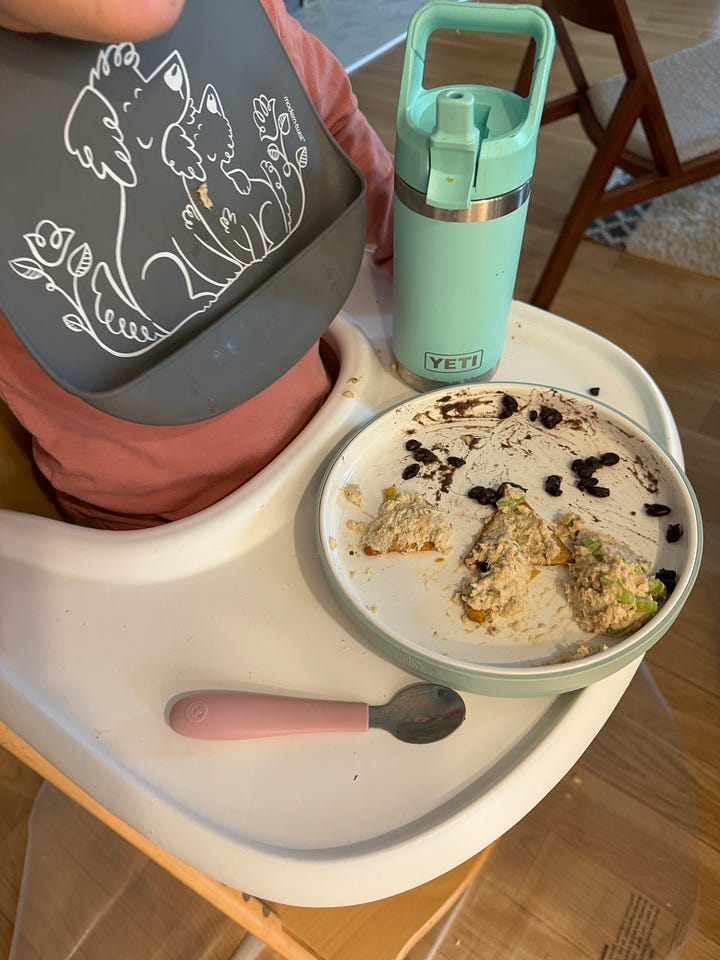

Porcelain white plates with silicone sleeves: I love that these plates mimic adult serving ware. They are porcelain, but protected from breaking by a silicone sleeve, which also makes the plate harder to slip around on the table. The biggest drawback with these is that they are a little too wide for most highchair trays. But they work great for sitting directly at the table or counter.
Stainless steel plates with silicone sleeves: These stainless steel plates are the same brand as the above and use a similar silicone sleeve. I don’t find this as necessary with metal, since it’s not going to break, but it definitely helps with slippage. The biggest drawback of stainless steel is that you can’t put it in the microwave. This plate set comes with lids that are convenient for storing leftovers directly in the fridge or covering a half-abandoned plate for later. We don’t find ourselves using them that much, so probably should have opted for a set with less bells and whistles.


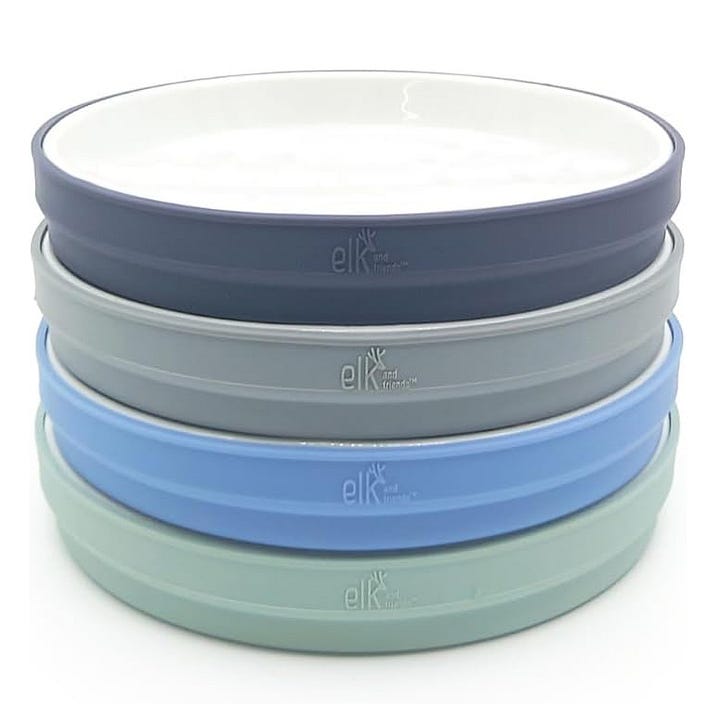

Basic stainless steel dinner plates: The most space efficient and simple stainless steel solution. This stack of kid plates fits easily on our shelves. They are lightweight and durable. And though you can’t put it in the microwave, you CAN put it directly in the oven to keep the food warm. One solution for slippage is to simply buy a silicone place mat. This is also what we do when we use regular adult plates for her.
Round lightweight plastic dinner plates: Though I don’t opt for plastic when I can help it, these BPA-free Mushie plates are very lightweight and convenient, especially for eating outdoors.
For more of my recs, check out my (mostly) non-toxic munchkin kitchen essentials which help make meal prep much easier. And if you’re curious who I am, you can read more about my villain origin story / career in food here.
Did you like this post? Please take 30 seconds and click the heart button at the bottom! It is an easy, free way to help more people find my work!
My latest cookbook is your culinary and dietary road map to reclaim your favorite comfort foods without the consequences (complete with 130 anti-inflammatory gluten free recipes…that are also family friendly!). Ina Garten says “I love this book!”—listen to the queen and order your copy!



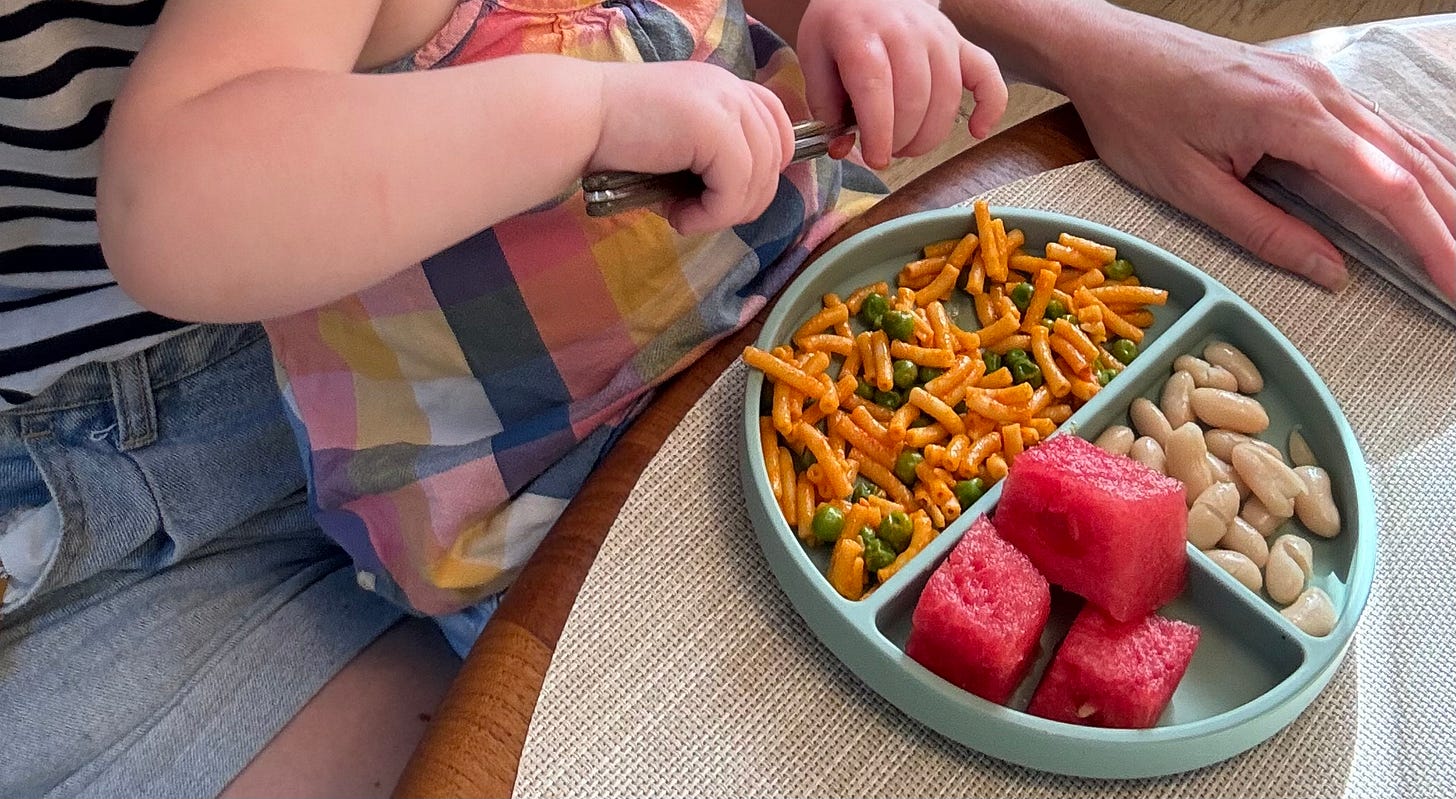
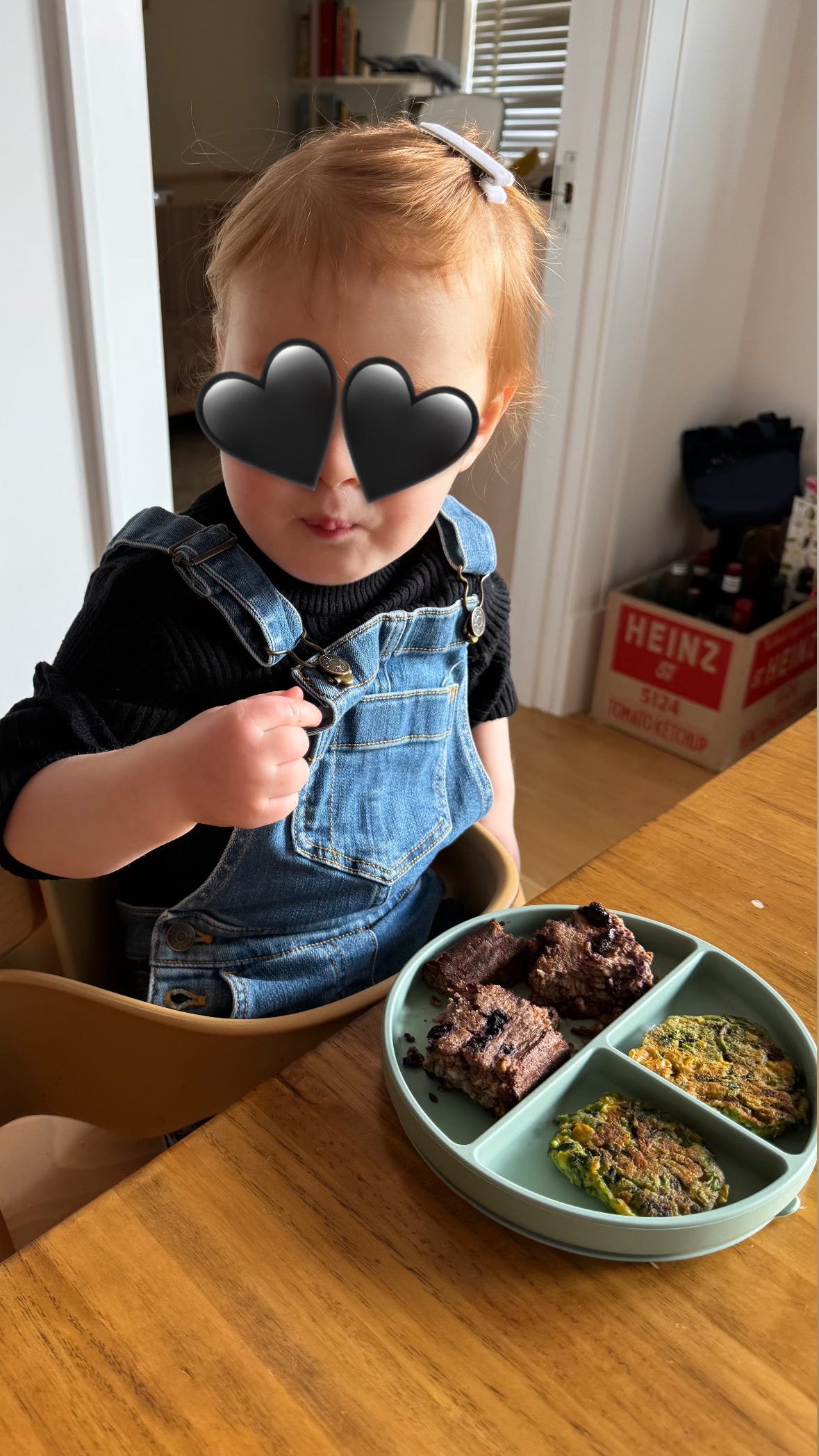
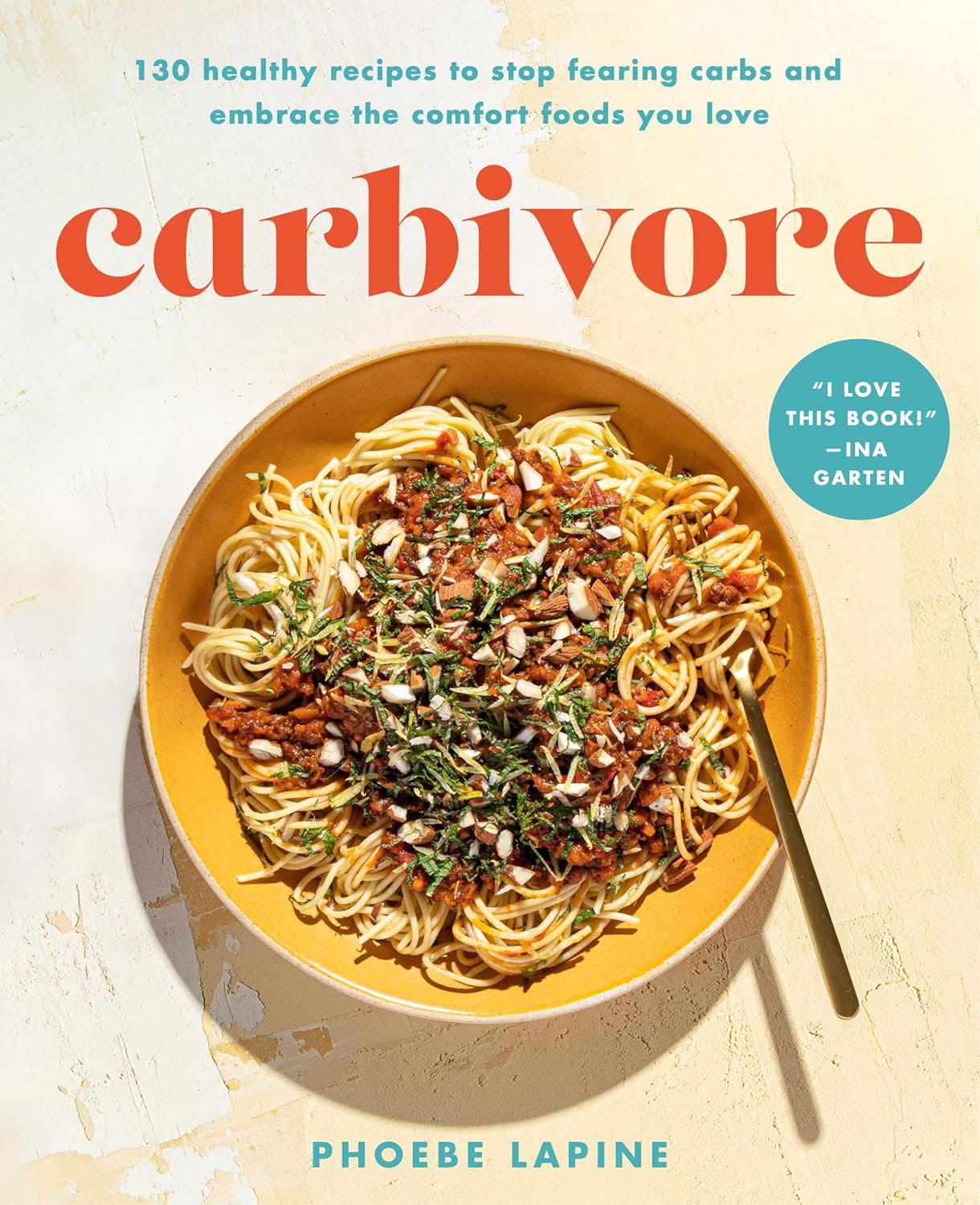
I have thought about this a lot and found it hard to find kids plates WITHOUT sections that weren’t huge! Especially when solids were new ish. Thanks for the round up!
I'm a pediatric feeding therapist and I'm with you that we need to offer variety in not only foods, but also dishes! Divided plates are nice as when it comes to fine motor skills, it's tricky for young toddlers and kids to get more pureed foods like yogurt onto a spoon without a lip to scoop up onto. If you have a picky eater, divided plates might be the only way you can introduce new foods without the freak out, and that's okay too! They can get used to that new food on their plate, not touching other foods and then you can slowly move to regular undivided plates. This is a great conversation to dive into!